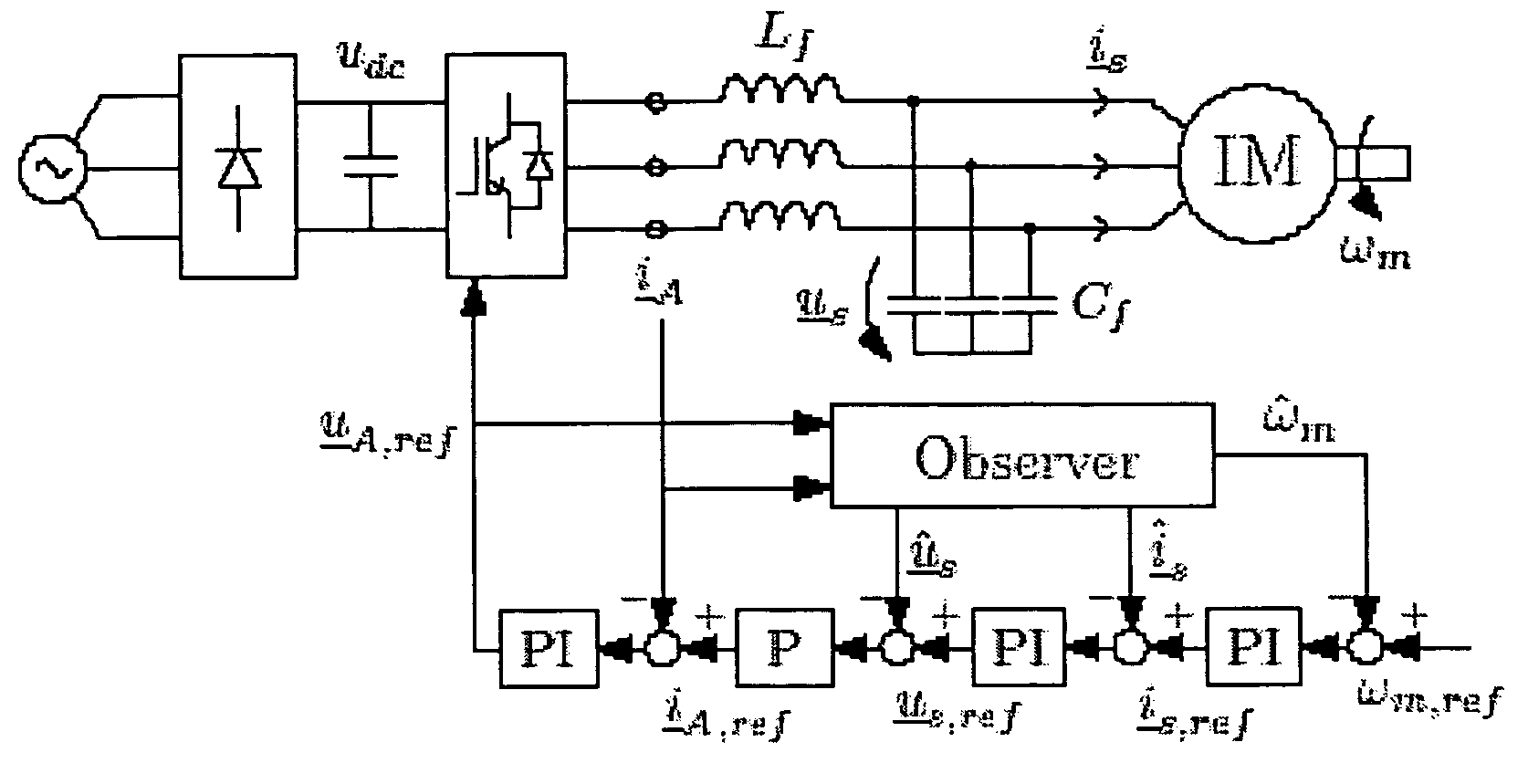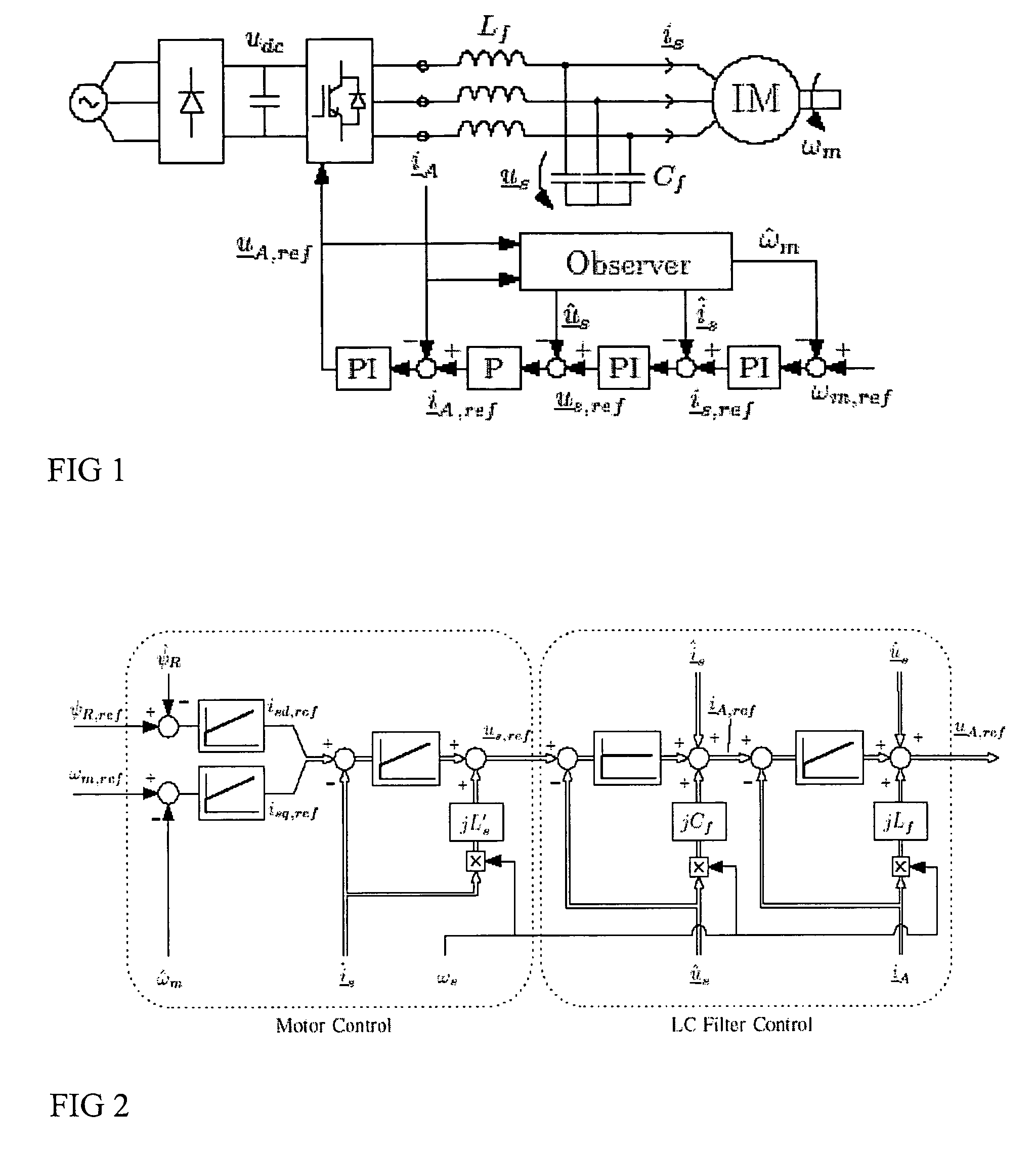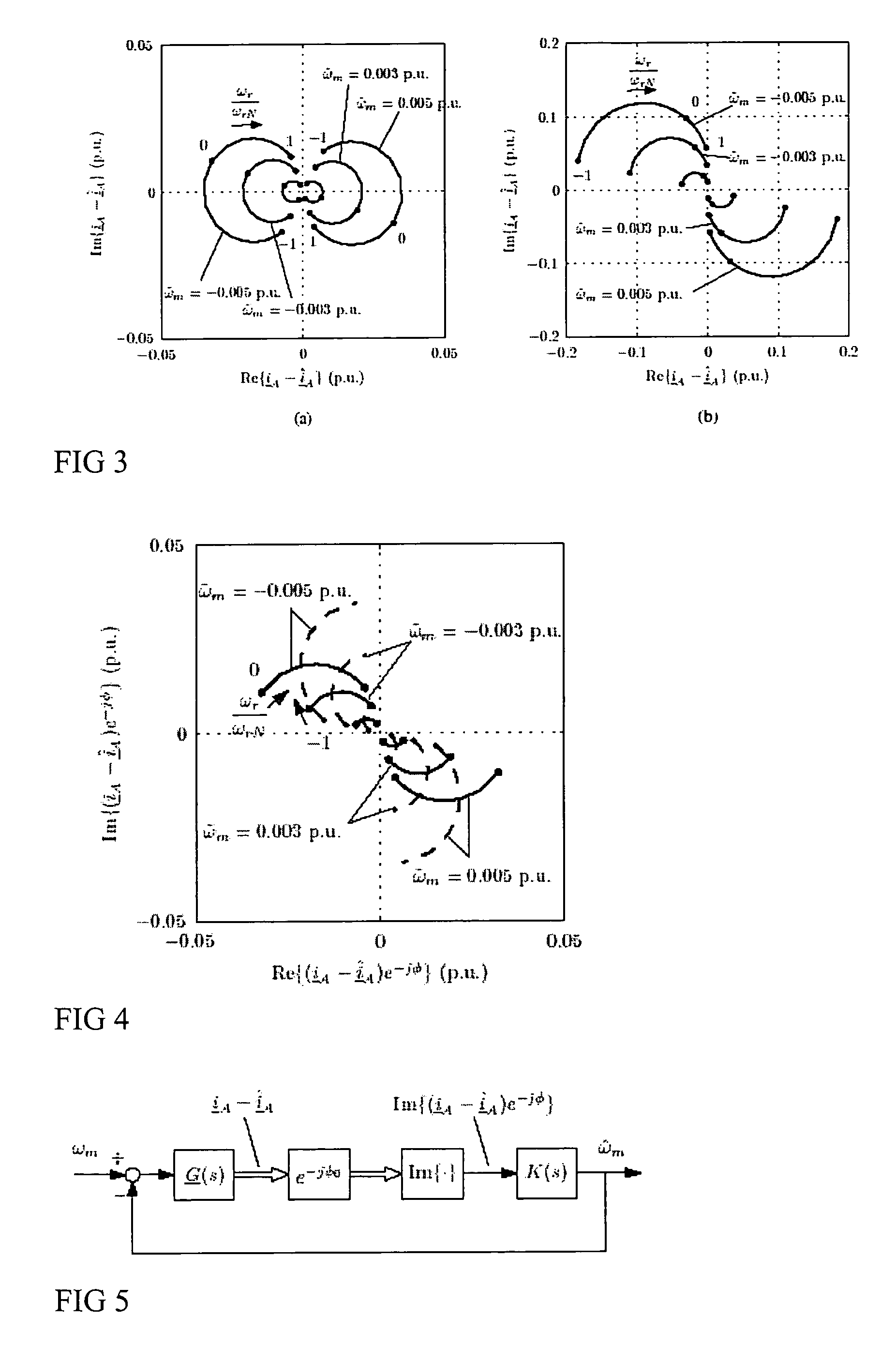Speed sensorless control of an induction machine using a PWM inverter with output LC filter
a technology of inverter and sensor, which is applied in the direction of motor/generator/converter stopper, dynamo-electric gear control, dynamo-electric converter control, etc., can solve the problems of increased losses and acoustic noise, unwanted effects of motor, and increased motor control difficulty
- Summary
- Abstract
- Description
- Claims
- Application Information
AI Technical Summary
Problems solved by technology
Method used
Image
Examples
Embodiment Construction
[0020]In the following first the system model and control are explained. Then attention is given to dynamic analysis of the system and simulation and experimental results are also described.
[0021]System Model and Control
[0022]A principle of the control system is shown in FIG. 1. The inverter output voltage uA is filtered by an LC filter, and the induction motor (IM) is fed by the filtered voltage us. The inverter output current iA and the dc link voltage udc are the only measured quantities, whereas the stator voltage us, stator current is, and the electrical angular speed ωm of the rotor are estimated by an observer (the estimated quantities being marked by ‘^’). The system is controlled by nested control loops in estimated rotor flux reference frame. It should be noted that the control arrangement presented is only one example of suitable control.
[0023]A. Filter and Motor Models
[0024]In a reference frame rotating at angular frequency ωs, the equations for the LC filter are
[0025]ⅆi...
PUM
 Login to View More
Login to View More Abstract
Description
Claims
Application Information
 Login to View More
Login to View More - R&D
- Intellectual Property
- Life Sciences
- Materials
- Tech Scout
- Unparalleled Data Quality
- Higher Quality Content
- 60% Fewer Hallucinations
Browse by: Latest US Patents, China's latest patents, Technical Efficacy Thesaurus, Application Domain, Technology Topic, Popular Technical Reports.
© 2025 PatSnap. All rights reserved.Legal|Privacy policy|Modern Slavery Act Transparency Statement|Sitemap|About US| Contact US: help@patsnap.com



